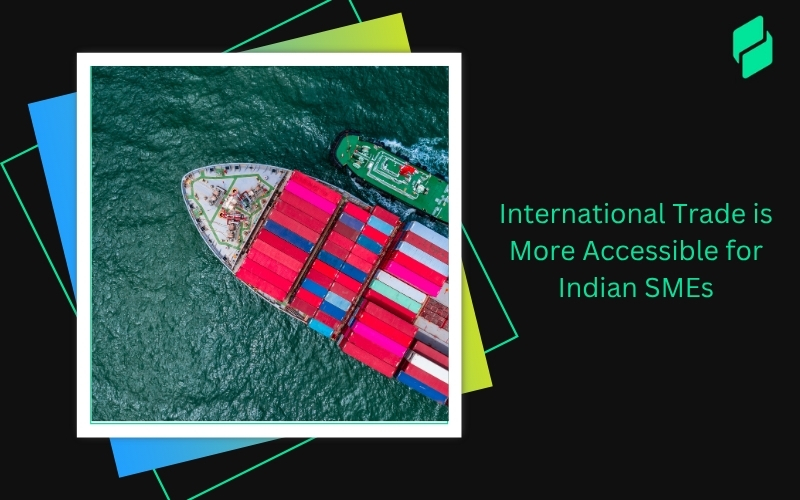Optimize your business: use unlimited savings with Pazago fulfilled now!
Get Started ->Shipping costs can quickly spiral out of control if you're not careful with freight classification. Freight charges often make up a large part of your shipping budget, so even small classification errors can mean paying more than you should.
For Indian exporters, especially those sending goods to the U.S. or other regions using standardized freight classifications like the NMFC system, understanding how freight is categorized is key to avoiding unexpected charges.
In this blog, you'll learn how NMFC codes work, what freight classes mean, and how both affect your shipping charges. The goal is simple: help you avoid unnecessary costs and keep your logistics smooth and predictable.
What Are NMFC Codes?

NMFC stands for National Motor Freight Classification. It's a standard developed by the National Motor Freight Traffic Association (NMFTA), mainly used in North America. The goal is to classify every type of freight into a system that helps carriers, shippers, and logistic partners speak the same language.
Each item you ship is assigned an NMFC code, which is a number linked to a product description and a specific freight class. This code gives important details about how the item behaves in transit, its weight, size, and shape, and how likely it is to get damaged or stolen.
With NMFC codes in mind, it's important to understand how these codes relate to the different freight classes that determine your shipping costs.
Also Read: Understanding Incoterms in International Trade
Understanding Freight Classes
Using the correct NMFC code is important because it directly affects your freight class. And freight class plays a big role in what you pay. If the wrong code is used, your shipment might be reclassified, delayed, or even fined.
Freight class refers to the category that each item falls into based on specific characteristics. There are 18 freight classes, which range from Class 50 (the least expensive to ship) to Class 500 (the most expensive). The class determines how much you'll pay for shipping.
Here's a quick table that breaks down the different freight classes:
As you can see, the higher the class number, the more expensive it is to ship that item. This is because higher-class goods usually take up more space, are harder to stow, or require special handling.
Why Accurate Classification Matters

Accurate freight classification isn't just about avoiding errors; it directly impacts your bottom line. If your shipment is misclassified, it could lead to:
- Higher shipping costs: Misclassifying freight can result in being charged for a higher class, leading to increased fees.
- Penalties: If a shipment is found to be incorrectly classified after it's been shipped, you could face penalties or delays.
- Legal and compliance issues: Ensuring the correct classification helps maintain compliance with shipping regulations, preventing potential legal issues.
By taking the time to classify your goods accurately, you ensure smoother shipments and avoid unexpected costs.
Now that you're familiar with freight classes, let's break down the key factors that determine which class your goods fall into.
Also Read: Understanding What is Freight Shipping and How It Works
Key Factors Determining Freight Class

Freight class isn't arbitrary. It's determined by four key factors that define how an item behaves during transit. These factors ensure that carriers can properly categorize freight based on its unique characteristics, which in turn affects how much you'll pay for shipping.
- Density
Density is one of the most important factors in freight classification. It refers to how much an item weighs relative to its size. Simply put, it's a measure of how much weight fits into a certain volume. Higher-density items generally have lower shipping costs because they fit better on pallets and take up less space in a shipping container.
- Stowability
Stowability describes how easily the freight can be stored with other goods during transit. If your product is oddly shaped, fragile, or needs special packaging, it will have a harder time fitting with other shipments. This can make it more expensive to ship.
- Handling
Handling refers to the amount of effort and care required to load, unload, and transport the freight. Items that are delicate, hazardous, or need special treatment (like refrigeration) will typically be assigned a higher freight class.
- Liability
Liability involves the risk of damage, theft, or spoilage during transit. If an item is fragile or easily damaged, it may be assigned a higher freight class. Similarly, high-value items like electronics or jewelry may have higher insurance costs, which increases the shipping cost as well.
These factors are crucial, but how exactly do we measure one of the most important, density? Let's find out.
Also Read: Understanding Marine Cargo Insurance and Freight Liability
Calculating Freight Density

As we discussed earlier, density plays a significant role in determining freight class. The more compact and heavy an item is, the lower its freight class, which means lower shipping costs. Understanding how to calculate density can help you determine the correct freight class and avoid costly mistakes.
How to Calculate Density
Density is determined by dividing the weight of your shipment by its volume (measured in cubic feet). Here's the formula:
For Example: Let's say you are shipping a box that weighs 50 pounds and has the following dimensions:
- Length: 24 inches
- Width: 18 inches
- Height: 12 inches
First, convert the measurements to cubic feet. Since one cubic foot = 1,728 cubic inches (12 inches x 12 inches x 12 inches), the volume of the box is:
Volume = (24 x 18 x 12) / 1,728 = 5.33 cubic feet
Now, calculate the density:
Density = 50 pounds / 5.33 cubic feet = 9.38 pounds per cubic foot
With a density of 9.38 pounds per cubic foot, this box would likely fall under a higher freight class, as it's on the lighter side for its size.
Why Does This Matter?
Getting the density right is crucial for correct freight classification. If you miscalculate, you could end up paying more than you should or face penalties if the carrier reclassifies your shipment.
With density in mind, the next step is knowing which NMFC codes match your products. Here are a few common ones.
Also Read: How to Calculate and Declare Customs Value
Common NMFC Codes for Indian Exporters
As an exporter from India, understanding the NMFC codes for your products is key to avoiding misclassification. Below are some common products exported from India and their corresponding NMFC codes:
These codes are essential for ensuring your products are classified correctly, preventing unnecessary shipping delays or overcharges.
As the NMFC codes play such a big role, it's essential to keep up with the changes coming in the NMFC system in 2025.
Also Read: Top HSN codes which India imports and exports
Key Changes Coming to the NMFC System in 2025

The NMFC system is constantly evolving to keep pace with changes in shipping practices and logistics. One major update is scheduled for July 2025, when the NMFTA will implement new rules that could affect how products are classified.
What's Changing?
- Updated Freight Classes: Some products will experience a shift in their assigned class according to revised guidelines. For example, 199 items have been updated with a symbol to indicate they are subject to handling, stowability, or liability considerations, though no class changes are involved.
- More Detailed Product Codes: Broad product categories will now be broken down into more specific subcategories for greater precision. One such change involves the removal of 20 items under the Alloys generic heading, which have been replaced by a new item that will follow a "viz." format, incorporating classes based on the FCDC’s 13-sub density scale.
- Changes in Density Calculations: Adjustments to how density is calculated could affect shipping costs for many exporters. Specifically, 69 items will now be classified according to the FCDC's 13-sub density scale, leading to more accurate and consistent classifications.
These changes could impact how you classify goods, potentially leading to different freight charges. It's important to stay updated on these revisions to avoid mistakes and keep shipping costs under control.
With changes on the horizon, it's important to prepare and adjust your classification process. Here are some tips to help Indian exporters like you.
Also Read: Understanding the Latest Changes in India's Foreign Trade Policy
Tips for Indian Exporters

If you're an Indian exporter shipping goods to the U.S., understanding the NMFC (National Motor Freight Classification) system is crucial. These tips can help you avoid costly errors and ensure smoother logistics:
- Double-Check Your NMFC Code: Always verify the correct NMFC code for your product. Use resources like your freight forwarder or the NMFTA database to ensure accuracy.
- Understand the Classification Factors: Remember the four key factors: density, stowability, handling, and liability. Keep them in mind when determining freight class.
- Measure and Weigh: Take precise measurements of your shipments and calculate the density accurately. This helps in assigning the correct class.
- Stay Updated: With changes coming in 2025, stay informed about any updates to the NMFC system. This ensures you don't miss important adjustments that could affect your shipping costs.
- Work with Professionals: If you're unsure about the classification process, work with a freight forwarder or logistics expert who understands the complexities of the NMFC system.
By following these steps, you'll be in a better position to avoid costly mistakes and ensure that your shipments are classified correctly.
With these tips in mind, let's look at how Pazago can support you in optimizing your freight and export operations.
Also Read: Understanding Steps and Objectives in Export Procedure
How Pazago Can Help You with Freight and Exporting

If you're looking for a way to simplify your export process, Pazago offers a range of services to help you manage logistics more efficiently and cost-effectively.
- Reasonable Logistics: Optimize shipping routes to cut down on delays and costs, ensuring timely deliveries and helping you control shipping expenses.
- Shipment Tracking: Track your shipments every step of the way. This level of visibility reduces uncertainty and allows you to stay updated on your shipments' status.
- Quality Inspections: Pazago also helps manage quality inspections, ensuring your products meet global standards and reducing the risk of delays or rejections.
- Centralized Document Management: Simplify the complex paperwork process by centralizing all export-related documents, such as invoices and certificates, making it easier to create, store, and share them.
- Quick, Safe Payments: Pazago handles payments, currency conversions, and financing, making export transactions quicker and more secure while reducing risk.
- Effortless Collaboration: Conduct smooth communication with freight forwarders, customs agents, and buyers, keeping everything on track and minimizing disruptions.
Using Pazago can make your exporting experience more efficient, giving you the tools you need to keep shipments running smoothly and cost-effectively.
Conclusion
Understanding NMFC codes and freight classes is essential for any exporter, especially when shipping to international markets. Correct classification ensures you're not overpaying for shipping and helps avoid penalties or delays. By considering factors like density, stowability, handling, and liability, you can better navigate freight charges and optimize your shipping strategy.
For Indian exporters, staying on top of changes in the NMFC system and utilizing tools like Pazago can further simplify the process, reduce shipping costs, and keep your logistics running smoothly.
Ready to take control of your shipping process and avoid costly mistakes? Schedule a demo today and discover how our platform can simplify your export logistics and help you stay ahead of the curve.


.png)








